Gashadokuro: A Terrifying Nocturnal Ghost Yokai With Voracious Appetite For Human Blood
A. Sutherland - AncientPages.com - Japanese mythology has a rich arsenal of tales, legends, and myths. Among them, some describe unbelievable, supernatural, and malevolent spirits and monsters with the powers of invisibility.
Mitsukuni defying the skeleton spectre invoked by princess Takiyasha. Utagawa Kuniyoshi, 1798 - 1861 - Public Domain
The name of this terrifying Yokai predator varies, and Gashadokuro (“starving skeleton”) is known in Japanese mythology as O-Dokuro, Dokuro-No-Kai, and Mekurabe.
Folklore stories from Japan describe a gigantic creature because it is ten or more meters tall.
Gashadokuro has very specific tactics to attack. He bends over to attack his victims, biting off their heads and letting the blood run over their bodies as much as possible. The creature has a voracious appetite for revenge and enjoys drinking human blood.
These terrifying spirits are thought to be indestructible.
Gashadokuro prefers to hunt and kill under the cover of cloudy and dark nights. Victims of this Yokai usually hear his coming because they hear ringing in their ears, or similar noise, as the creature is said to make a clattering sound with its teeth.
Unfortunately, these people cannot run to safe places; its too late as the Yokai’s ringing is heard only briefly before the creature’s attack. The Gashadokuro cannot be destroyed, and ancient people have always known about it. However, special Shinto charms can ward the monster off and redirect its attention.
There are many centuries-old tales of these huge skeletons. Some describe them as a re-animated combination of many skeletons created from dead people’s bones. According to one version oh his story, he was made of the skulls of people who died on the battlefield.
These skeletons can function without body tissue and muscles.
The only warning for people who encounter the Gashadokuro is to find a safe place to hide as soon as possible and wait out the sunrise. However, this good advice often does not help because the spirit can virtually disassemble itself to hide in different places one would not believe it to be able to fit into.
The Gashadokuro is a mysterious figure with deep roots in ancient folklore, though it is very difficult to find traces leading to these roots.
However, there is one legend that could contribute to all later stories about the evil Gashadokuro. In the 10th century in Kyoto, a powerful samurai (Taira no Masakado) revolted against government forces on the island of Honshu.
His daughter named, Takiyasha-hime experimented with magic and was known to be a sorceress; she could make ghosts appear.
She knew her father was not powerful enough to stand against the government, so she wanted to protect him and their castle.
Image credit: Adobe Stock - Peppeneppe
Using dark magic from a mysterious scroll she possessed, she came in contact with a Gashadokuro that appeared out of a void to charge at Ooya Tarou Mitsukini, the opposing samurai.
Throughout the period since, the evil Gashadokuro apparently continues to terrorize the land, as this legend says.
Will the Gashadokuro predator ever stop hunting its prey? No one knows, but perhaps when his anger is finally released, and it leaves the spirit’s body, the bones collapse, and the Gashadokuro exists no more.
Updated on December 27, 2023
Written by – A. Sutherland - AncientPages.com Senior Staff Writer
Copyright © AncientPages.com All rights reserved. This material may not be published, broadcast, rewritten or redistributed in whole or part without thexpress written permission of AncientPages.com
More From Ancient Pages
-
 Samurai Swords: Katana And Wakizashi And Their Long Tradition
Ancient Traditions And Customs | Aug 6, 2018
Samurai Swords: Katana And Wakizashi And Their Long Tradition
Ancient Traditions And Customs | Aug 6, 2018 -
 Mysterious Ancient Dark Object Hidden In The Colorado Mountains – What Happened To It?
Featured Stories | Jun 17, 2024
Mysterious Ancient Dark Object Hidden In The Colorado Mountains – What Happened To It?
Featured Stories | Jun 17, 2024 -
 Unexpected Discovery – Medieval Monks Recorded Mysterious Volcanic Eruptions
News | Apr 6, 2023
Unexpected Discovery – Medieval Monks Recorded Mysterious Volcanic Eruptions
News | Apr 6, 2023 -
 Anne Neville – The Dramatical Story Of The White Queen
Featured Stories | May 22, 2020
Anne Neville – The Dramatical Story Of The White Queen
Featured Stories | May 22, 2020 -
 Early Harappan Cultures Can Solve Mysteries Of Several Lost Cities Of Indus Valley Civilization
Artifacts | May 30, 2019
Early Harappan Cultures Can Solve Mysteries Of Several Lost Cities Of Indus Valley Civilization
Artifacts | May 30, 2019 -
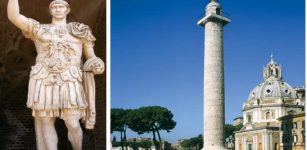 On This Day In History: Roman Emperor Trajan Was Born In Spain – On Sep 18, 53 AD
News | Sep 18, 2016
On This Day In History: Roman Emperor Trajan Was Born In Spain – On Sep 18, 53 AD
News | Sep 18, 2016 -
 Lemminkainen: Mythical War-Hero Of Finnish Great Epic ‘Kalevala’
Featured Stories | Oct 14, 2016
Lemminkainen: Mythical War-Hero Of Finnish Great Epic ‘Kalevala’
Featured Stories | Oct 14, 2016 -
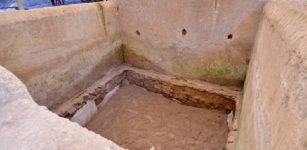 Necropolis of Porta Nola, Pompeii – new discoveries
Civilizations | Aug 30, 2015
Necropolis of Porta Nola, Pompeii – new discoveries
Civilizations | Aug 30, 2015 -
 The Magnificent Yule Goat In Gävle, Sweden Has Finally Arrived
Christmas Traditions | Dec 2, 2024
The Magnificent Yule Goat In Gävle, Sweden Has Finally Arrived
Christmas Traditions | Dec 2, 2024 -
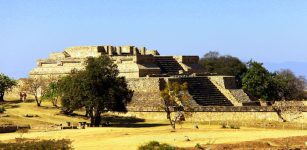 Why Do Some Cities Only Last A Century While Others Prosper For A Thousand Years Or More?
Archaeology | Mar 6, 2023
Why Do Some Cities Only Last A Century While Others Prosper For A Thousand Years Or More?
Archaeology | Mar 6, 2023 -
 Qeros: Study Of Drinking Vessels Provide New Clues To Long Traditions Of Andean People
Archaeology | Jul 27, 2020
Qeros: Study Of Drinking Vessels Provide New Clues To Long Traditions Of Andean People
Archaeology | Jul 27, 2020 -
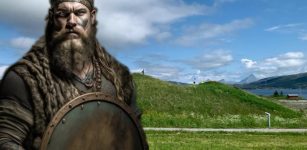 Is Mysterious Herlaugshaugen The Ship Burial Of Viking King Herlaug?
Archaeology | Jul 11, 2023
Is Mysterious Herlaugshaugen The Ship Burial Of Viking King Herlaug?
Archaeology | Jul 11, 2023 -
 Violent Conflict Played A Crucial Role In Early Farming Societies In Neolithic Europe – New Study
Archaeology | Jun 19, 2023
Violent Conflict Played A Crucial Role In Early Farming Societies In Neolithic Europe – New Study
Archaeology | Jun 19, 2023 -
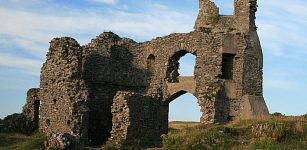 The Ruins Of Pennard Castle And The Tale Of Faeries’ Curse
Featured Stories | Mar 2, 2016
The Ruins Of Pennard Castle And The Tale Of Faeries’ Curse
Featured Stories | Mar 2, 2016 -
 Dura-Europos Roman Shield Created With Ancient Painting Techniques On Wood
Archaeology | Nov 9, 2015
Dura-Europos Roman Shield Created With Ancient Painting Techniques On Wood
Archaeology | Nov 9, 2015 -
 Ancient Village Of Monsanto, Miraculously Balanced Giant Boulders And Knights Templar Connection
Civilizations | Dec 20, 2018
Ancient Village Of Monsanto, Miraculously Balanced Giant Boulders And Knights Templar Connection
Civilizations | Dec 20, 2018 -
 Mysterious Skeletons Of A Tall Unknown Race Discovered In California – Who Were These Beings?
Featured Stories | Apr 10, 2024
Mysterious Skeletons Of A Tall Unknown Race Discovered In California – Who Were These Beings?
Featured Stories | Apr 10, 2024 -
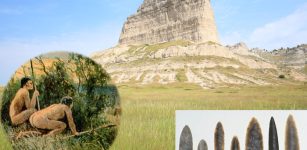 Evidence Humans Walked The Great Plains 18,000 Years Ago May Have Been Found – Archaeologists Say
Archaeology | Mar 14, 2022
Evidence Humans Walked The Great Plains 18,000 Years Ago May Have Been Found – Archaeologists Say
Archaeology | Mar 14, 2022 -
 Viklaumadonna Hides A Thousands-Year-Old Secret
Artifacts | Jan 5, 2020
Viklaumadonna Hides A Thousands-Year-Old Secret
Artifacts | Jan 5, 2020 -
 Oldest Sea Reptile From Age Of Dinosaurs Found On A Remote Arctic Island
News | Apr 3, 2023
Oldest Sea Reptile From Age Of Dinosaurs Found On A Remote Arctic Island
News | Apr 3, 2023


